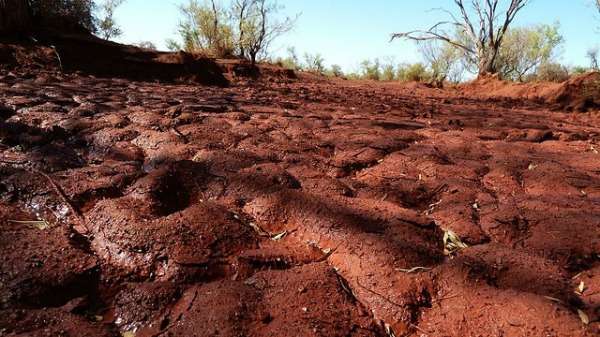Pilbara soils indicate post-wildfire recovery timeline

Soils affected by wildfires undergo significant changes within one year after a fire with that same soil partially regenerating after around five years, according to a study examining how semi-arid soils recover from natural fire events.
The findings will assist mining companies and land managers restore landscapes in the northwest region that have been degraded by various activities including mining.
As part of the study, UWA and Kings Park and Botanic Garden researchers examined wildfire sites in the Pilbara between Newman and Karijini National Park.
They selected sites at different periods of recovery—three months, one, five, seven and fourteen years after a wildfire—and considered a range of soil indicators at each location.
Results showed that the first year after a fire is critical, with significant changes occurring in the soil composition, such as increases in pH, electrical conductivity and available nutrients.
Partial regeneration appears to occur after about five years, when chemical and biological indicators such as pH, electrical conductivity and fungi-to-bacteria ratio become constant.
"At the end of the day, we want the results of our research to be useful and practical for land managers," UWA research assistant professor Miriam Muñoz-Rojas says.
"The indicators we recorded will give practitioners a reference point for comparison.
"They can then consider whether the soils they are restoring need any amendments to improve soil quality and functionality."
The researchers found using a single indicator is insufficient to understand the post-fire response and condition of soils; rather, a combination of indicators is required.
"We found that microbial indicators—such as the proportion of fungi to bacteria—are very useful indicators of post-fire recovery," Dr Muñoz-Rojas says.
To measure microbial activity, researchers used the one-day CO2 (Solvita) test, a relatively new method that provides results much more quickly and effectively than traditional methodologies.
While the test has been widely used in the USA, its use in Australia and for restoration-related projects is relatively new.
Although the study's findings relate to the semi-arid soils of the Pilbara region, the methodology—including the use of the one-day CO2 test—could be applied to other regions and ecosystems.
The study forms part of a larger project called the Restoration Seedbank Initiative, a partnership between UWA, BHP Billiton Iron Ore, and Kings Park and Botanic Garden, which is due to run until 2017.
More information: Miriam Muñoz-Rojas et al. Soil physicochemical and microbiological indicators of short, medium and long term post-fire recovery in semi-arid ecosystems, Ecological Indicators (2016). DOI: 10.1016/j.ecolind.2015.11.038
Provided by Science Network WA
This article first appeared on ScienceNetwork Western Australia a science news website based at Scitech.

















